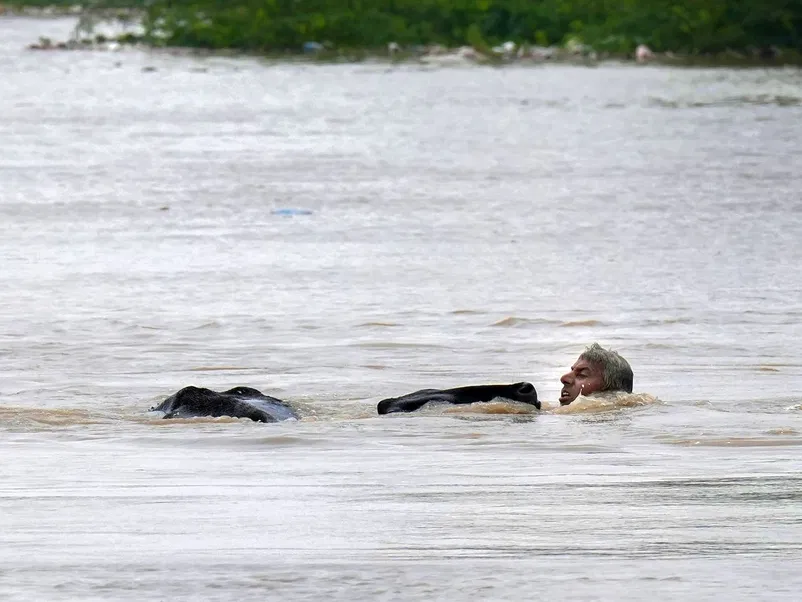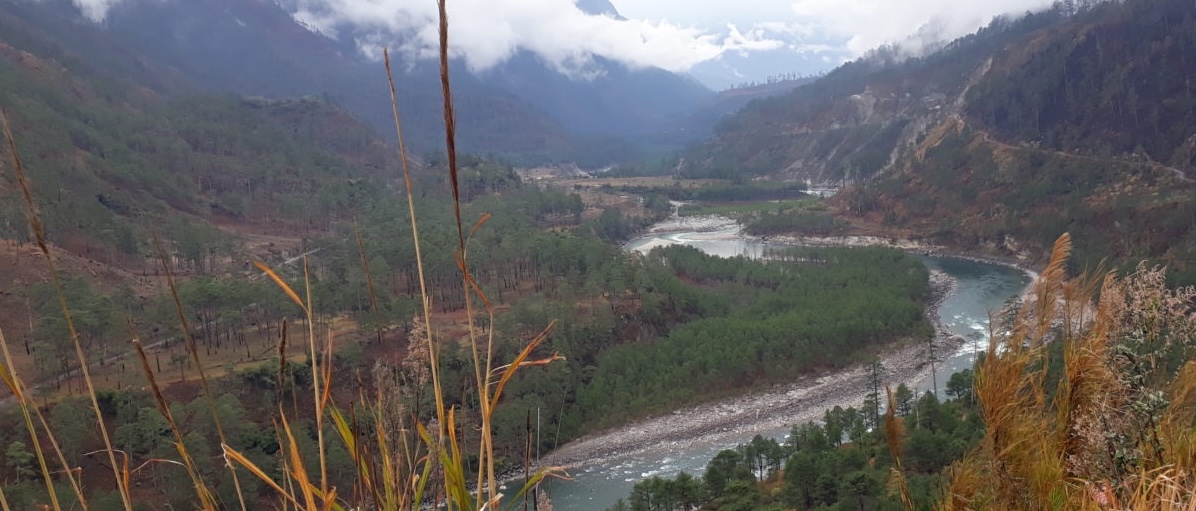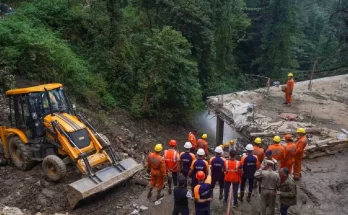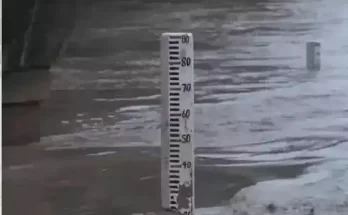Better flood management will not just save people and property, but help conserve more water for future generations.

A resident rescues a cow from the flood-affected Old Usmanpur village, in New Delhi, Thursday, July 13, 2023 (Photo credit: PTI)
New Delhi: As the television visuals of flooded Yamuna spilling over on Delhi roads and colonies scared Delhiites on July 13, a concurrent worry was shortage of drinking water as three of the national capital’s water treatment plants went underwater.
Two-three days ago, it was the scary visuals of buildings falling like a pack of cards, cars being washed away due to the devastating floods from Himachal Pradesh and Uttarakhand that were the talk of the town. This year it is north-west India that saw this flood fury unleashed early in the monsoon. At other times it is Bihar, Assam or Kerala that experience devastating floods with regular frequency.
There is a predictable cycle to it. Extremely heavy rainfall followed by massive floods washing away everything in its path, poor or almost nil management of floods and vast areas in towns and cities inundated for days.
And these would be the exact same cities and towns struggling for water some months down the line. In winters, large tracts of farmlands remaining vacant in winters as the small-land holding farmers don’t have irrigation. In summers, in cities, people flocking the tankers in their lane while in rural areas, mostly women downing their containers in deep wells.
Isn’t it really the same story every year?
It should not be and, if measures are taken well, it will not be.
Water Availability
India receives almost 70% of its annual precipitation in the four months of June to September. Over the years, even with the changing climatic conditions threatening the Indian sub-continent, India’s water availability has remained mostly static. Of course, there is a vast temporal and spatial variability in our geographically diverse country.
As per the Ministry of Jal Shakti data, the total water availability of India received through precipitation is about 3,880 Billion Cubic Meters (BCM) per annul, of which, after evaporation, only about 2,000-odd BCM is available as natural run off. Government records further show that because of the geographical reasons, only about 1,128 BCM per annul of this quantum can be utilised; 690 BCM of surface water and 438 BCM of replenishable ground water.
Officials warn that the per capita water availability in the country is reducing progressively. The average annual per capita water availability in the years 2001 and 2011 was assessed at 1,816 cubic meters and 1,545 cubic meters respectively. Anything less than 1,700 cubic meters annually is ‘water-stressed’ condition and further, anything below 1,000 cubic meters annually is ‘water scarce’ condition.
India’s diverse rivers
India’s annual precipitation, both by way of rains and snowfall, adds life to India’s hundreds and thousands of blessed rivers, some perennial, some peninsular. So, of the 2,000-odd BCM water available as natural run off, most of which pounds in monsoon months, do we save enough? Do our forests capture that rain? Do our lakes and ponds store that excess rainfall?
All this water, not tapped, not stored, actually flows down the drains, the rivers and then into the sea. While the rivers reaching the sea is an essential process to maintain the natural ecological cycle, at least some of the excess flood waters can definitely be stored.
Across India, there were scores of traditional natural rainwater harvesting methods – be it the Kalyanis in south Indian temples, the Mama Talaab in Vidarbha or the step wells in Gujarat and Rajasthan, each and every state and region had its own method of storing rainwater for lean days. Over the last century, ever since the piped water system was introduced by the British and the ownership of such traditional ponds, lakes, baodis changed hands from the community to the government, people forgot the art of storing rainwater.
Unlike the parasites that bigger cities such as Delhi, Mumbai, Chennai and Bengaluru have become – robbing water of their neighbours, depriving the real needy – the traditional methods resulted in de-centralised storage. Scores of cities in Gujarat’s arid regions and even in Rajasthan, store rainwater from the rooftop in a special tank built inside their homes.
A full season’s normal rainfall is good enough to provide potable water to the entire family for at least two years.
But the overall rainwater harvesting scenario in India is nothing to boast about. This is especially worrisome in the era of climate change. The Intergovernmental Panel on Climate Change has already warned of extremely erratic rainfall events, which in layperson’s terms in India, means that there would be a few days of extremely heavy rainfall with long spans of dry days even in monsoon. That makes it imperative for us to go for more and more de-centralised rainwater harvesting.
Thus the pertinent question to raise: Is enough being done to store excessive flood water, excess rainwater that cannot just augment groundwater storage but also help mitigate floods?
Government inaction
There are some communities, some non-governmental organisations working in the field of water conservation. Catchment treatment, catchment management and then water storage are done step by step to logically ensure that running water is made to go slow, the slow-moving water is made to stop and then the water that has stopped flowing is made to percolate into the ground.
Farm ponds, de-silting lakes to ensure that storage is enhanced and digging new ponds/lakes are just a few of the easy to do methods. Even when there are several government schemes, the picture is not hunky dory.
The same is the case with diverting excessive flood waters in the off-channel reservoirs. There has been a long pending plan with the Central government to build multiple off-channel reservoirs that can store flood waters diverted through canals with one-way sluice gates. That would ensure that the reservoirs along the river would store all the excess water during floods and the sluice gates would disallow the flow back to the river. But unfortunately, here too, we see an overall disinterest at all levels.
But, of course, it is not that the government does not know that it needs to conserve water. The Maharashtra government has been promoting farm ponds to store rainwater that will be helpful for Rabi crops. The Delhi government has been constructing wetlands and rainwater pits for the same. But the efforts are too little and too late.
In June 2019, the Central Water Commission (CWC) had brought out a report ‘Reassessment of Water Availability in Basins Using Space Inputs’ that put a lot of things in context. The Executive Summary of the voluminous report neatly sums up the way forward. It is just hoped that the government will pay heed to its own report and do something positive.
“In India, where demands for freshwater are continuously growing, and where limited water resources are increasingly stressed by over-abstraction, pollution and climate change, neglecting the opportunities arising from improved water management is nothing less than unthinkable in the context of the Indian economy.”
(This story first appeared on news9live.com on Jul 13, 2023 and can be read here.)



